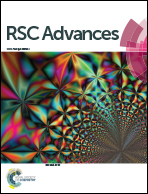A WAXS/SAXS study on the deformation behavior of β-nucleated propylene–ethylene random copolymer subjected to uniaxial stretching
Abstract
Copolymerization for making propylene-based random copolymers is an important strategy to broaden the applications of polypropylene, such as propylene random copolymer with β-nucleating agent as hot water pipes. In the present work, a β-nucleated propylene–ethylene random copolymer (P–E copolymer) containing a low content of ethylene (5.6 mol%) was subjected to uniaxial stretching at 30 and 100 °C. The structural evolution during deformation was investigated by in situ X-ray scattering using synchrotron radiation. An interesting temperature dependence of the deformation feature of β-crystal was observed. The β-crystal in the sample transformed to mesophase at 30 °C and to α-crystal at 100 °C. Molecular chains in β-crystal stretched at 30 °C was identified to be perpendicular to the stretching direction, while they tended to be parallel to the direction at 100 °C. On the other hand, cavitation was observed in β-nucleated P–E copolymer when stretched at 30 °C. As the tensile temperature reached 100 °C, no cavities could be detected. A deformation model of the β-nucleated P–E copolymer combining crystal transition, cavitation and orientation depending on the drawing temperature was described.


 Please wait while we load your content...
Please wait while we load your content...